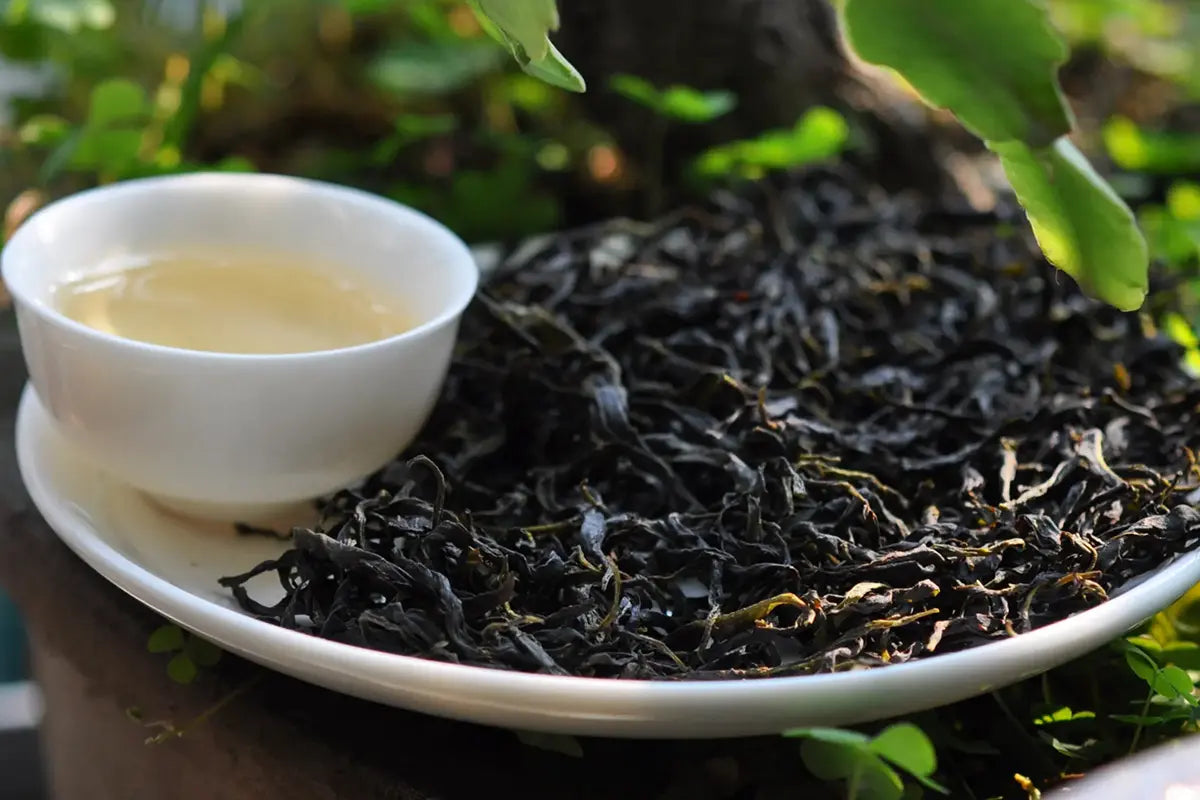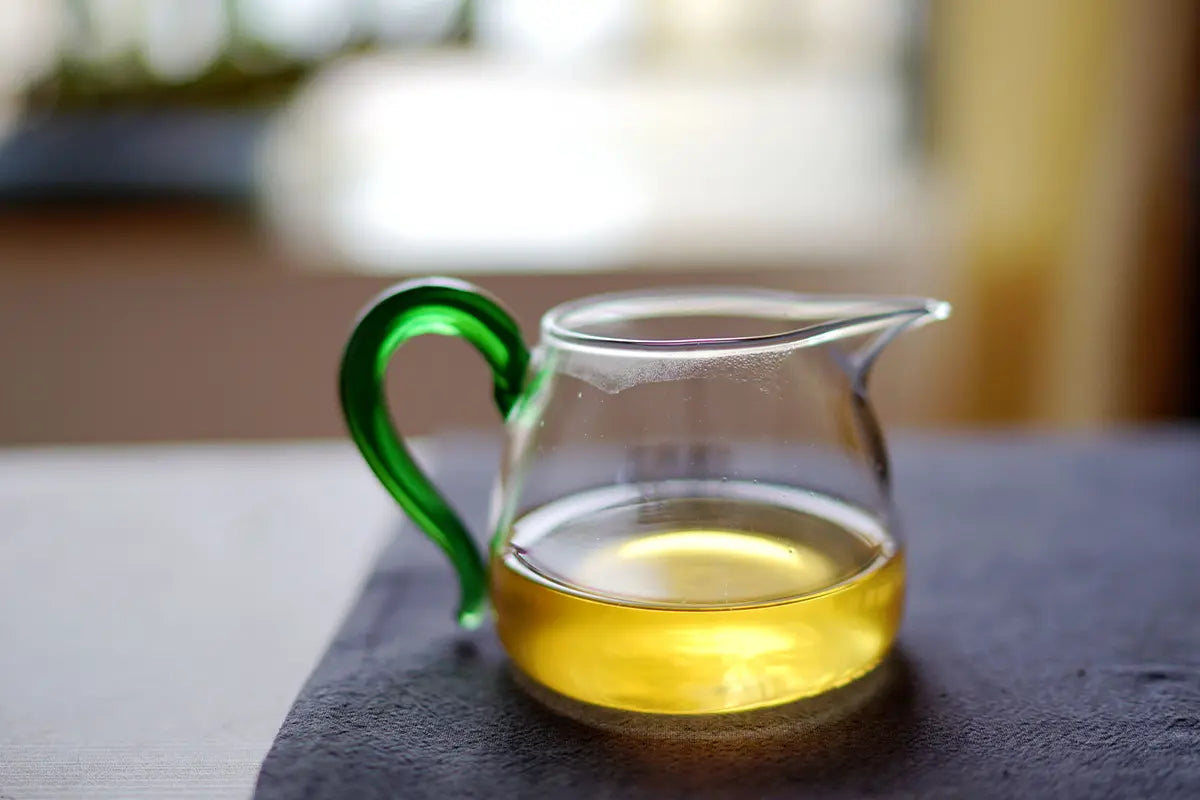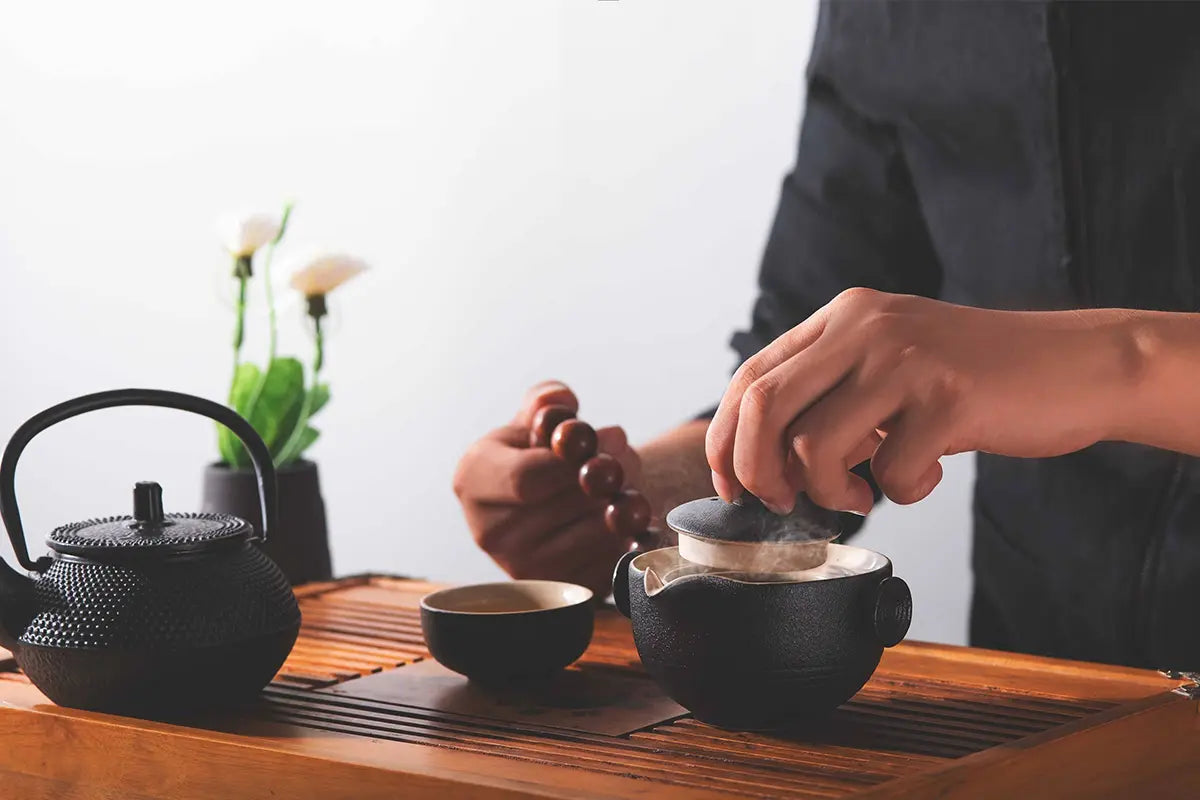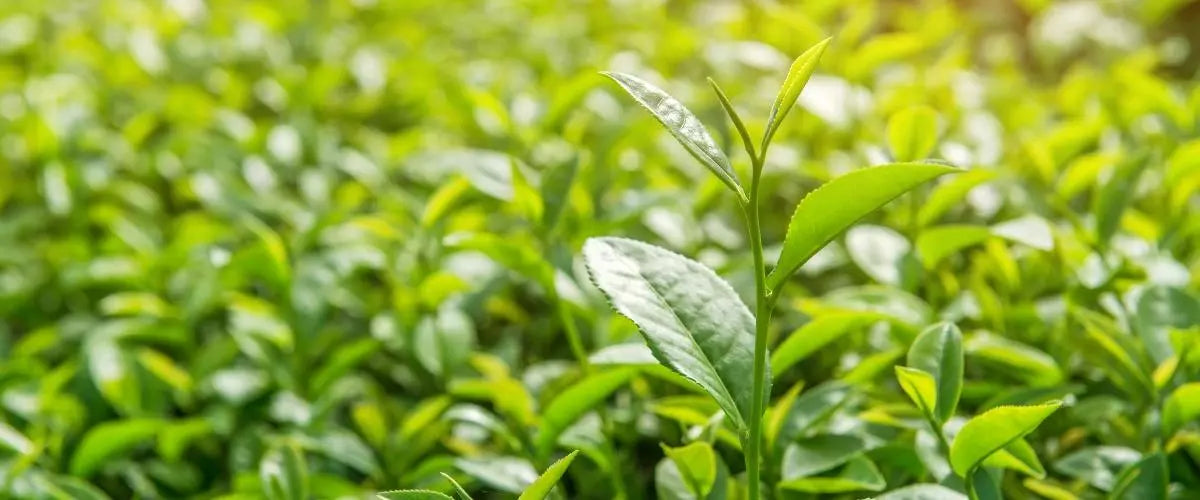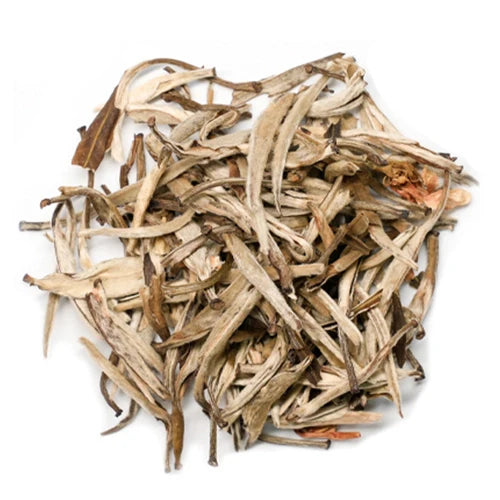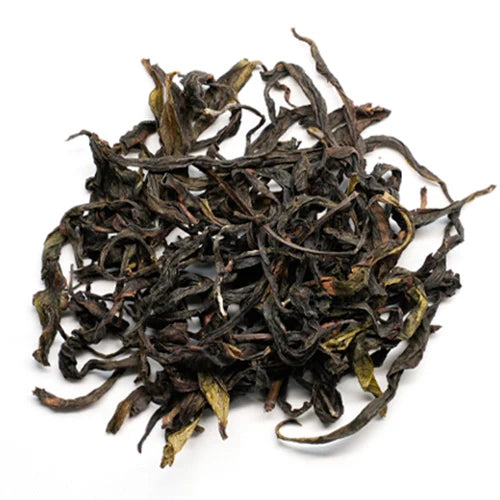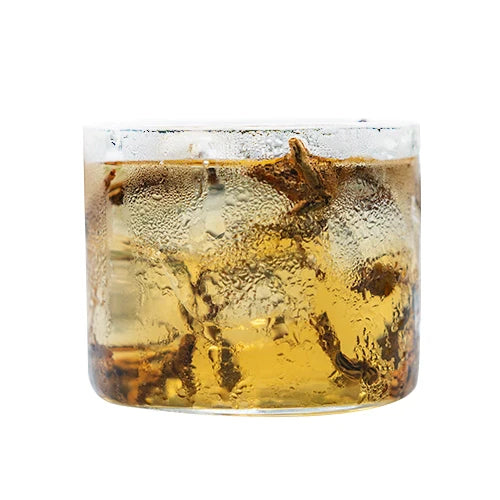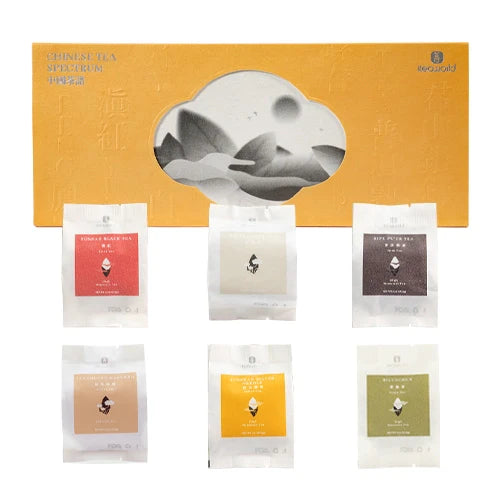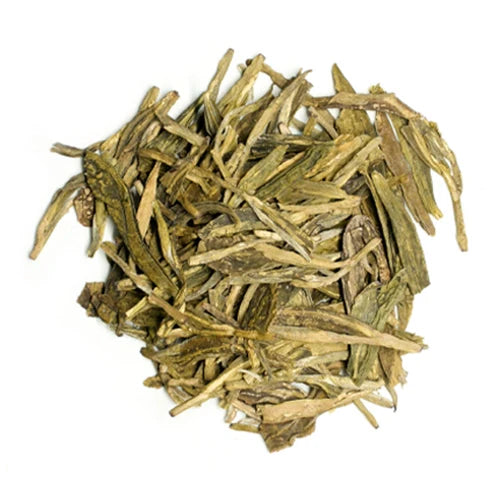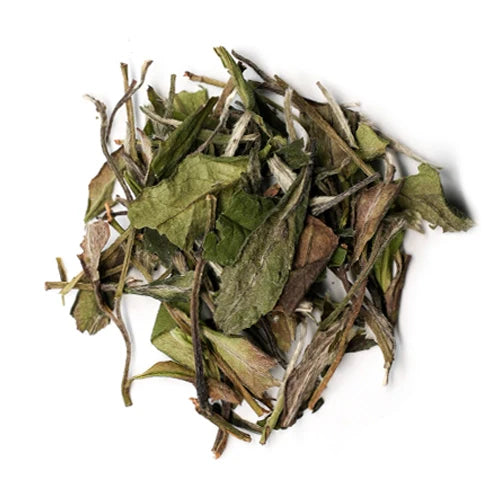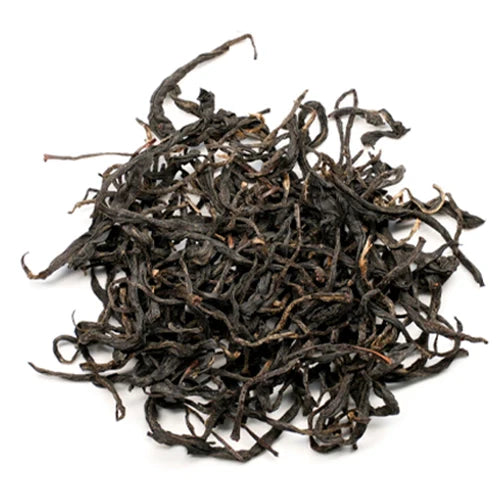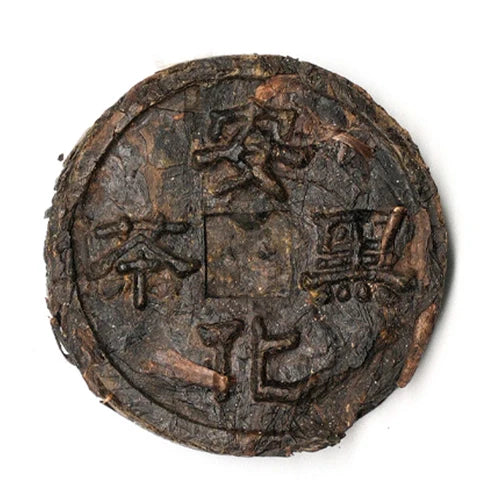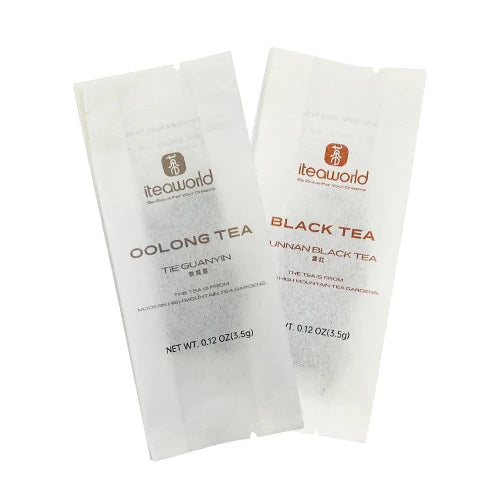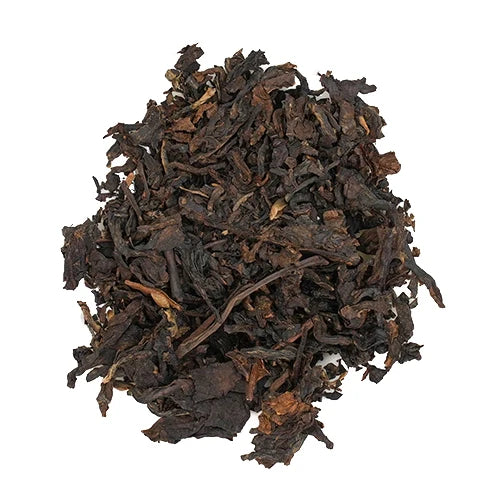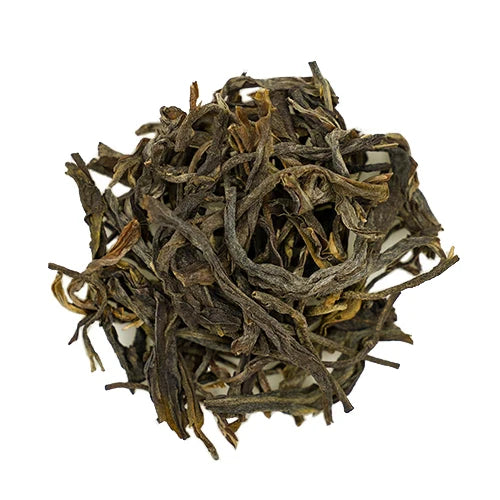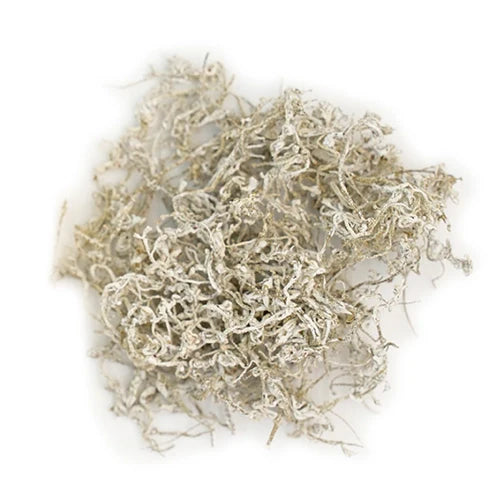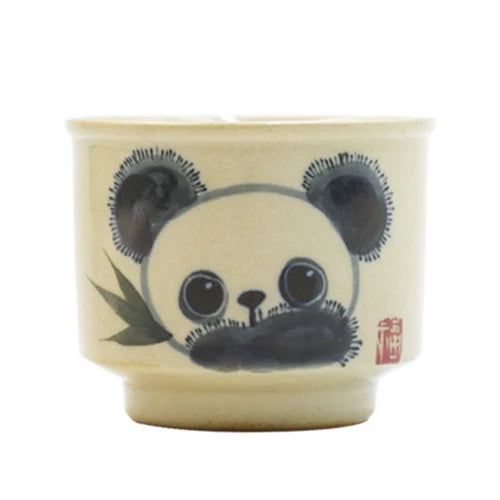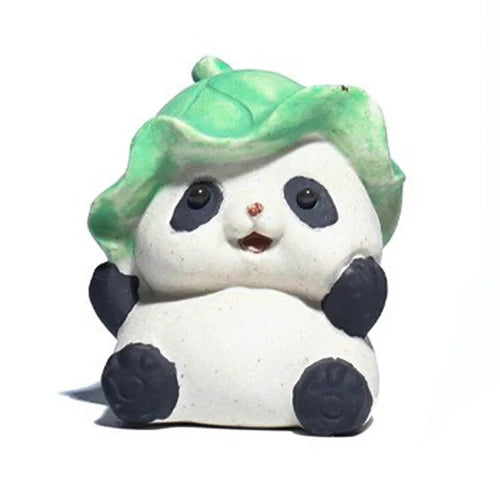Introduction
Black tea is a beloved beverage known for its strong flavor and rich aroma. In this buying guide, we will explore the best loose leaf black tea, focusing on five types: Lapsang Souchong, Yunnan Black Tea, Yingde Black Tea, Guangxi Old Tree Black Tea, and Wild Souchong Black Tea. Each type offers unique characteristics and flavors, allowing tea enthusiasts to find their perfect cup. Let's dive into the details!
I. History and Production of Black Tea
Black tea is part of the Camellia sinensis plant and was first discovered in China in the mid-17th century. Previously, green and oolong teas were the only teas consumed. Black tea is the most oxidized tea type, which gives it its darker color and robust flavor. It can endure higher brewing temperatures and preserves better than most teas. In British culture, black tea became associated with wealth and social status, leading to traditions like Afternoon Tea. Over time, black tea production expanded to other parts of the world, including India, Sri Lanka, and Africa. Today, black tea makes up 90% of the tea sold and consumed in the United States.
Premium Pick:
1. Black Tea Selection: Explore a Curated Collection of Premium Black Teas
Black Tea Selection offers a carefully curated assortment of high-quality black teas, including Lapsang Souchong, Yunnan Black Tea, Yingde Black Tea, and Wild Souchong Black Tea. This selection provides tea lovers with a diverse range of flavors and aromas, inviting them to embark on an exciting exploration of black tea.
Black Tea Selection includes four famous loose-leaf black teas, known for their exceptional quality. Each tea is sourced with utmost care, ensuring a high grade and natural, organic experience. Our commitment to sustainability extends to our eco-friendly packaging, minimizing our environmental impact.
In a single box, you can enjoy the pleasure of tasting four different tea flavors, each offering a unique and captivating aroma. Experience the floral hints of Souchong Tea, relish the honeyed essence of Yunnan Black Tea, delight in the fragrant allure of Yingde Black Tea, and indulge in the smoky notes of Wild Souchong Black Tea. Each tea presents a different taste adventure, allowing you to explore the vast spectrum of black tea flavors.
Experience the excellence of black tea with Black Tea Selection. Immerse yourself in the world of premium teas, appreciating the diverse flavors, enticing aromas, and outstanding quality. Elevate your tea journey and savor the best loose leaf black teas.
Budget Pick:
2. Yunnan Black Tea
Yunnan Black Tea is a renowned black tea originating from the core producing area of Yunnan, China. It is highly valued for its authenticity and has even been presented as a national gift to the British Royal Family. In 1986, Queen Elizabeth II received Yunnan Black Tea as a national gift during her visit to China.
Yunnan Black Tea is made from large-leaf tea trees, which contribute to its strong and long-lasting flavor. These tea trees have a longer growth cycle of 2-3 years and produce large and fairly tippy leaves. They contain higher levels of water extract and other substances, enhancing the tea's overall quality.
The misty high mountains of Yunnan provide an ideal environment for tea cultivation. Lusher vegetation, higher organic matter content in the soil, and significant day and night temperature differences all contribute to the accumulation of tea compounds in the leaves. These factors further enhance the flavor and aroma of Yunnan Black Tea, making it a sought-after choice for tea enthusiasts.
In summary, Yunnan Black Tea is a prized black tea known for its authenticity and rich flavor. It originates from Yunnan, China, where large-leaf tea trees thrive in the misty high mountains. The tea's unique characteristics and the favorable growing conditions in Yunnan combine to create a truly exceptional tea experience.
3. Wild Souchong Black Tea
Wild Souchong Black Tea is sourced from the mountains of Guangxi, Guilin, at an altitude of 800m. This tea offers a unique flavor of wildness, derived from sexually reproduced tea trees that thrive in their original ecological environment with well-developed root systems.
The tea leaves used for Wild Souchong Black Tea are plucked once a year, allowing them to develop distinct and captivating flavors. To create its characteristic aroma of smoky pine and longan, a combination of traditional pine smoke techniques and modern charcoal techniques are employed during the tea processing.
During the withering phase, the tea leaves are heated with Chinese Red Pine, infusing them with the smoky essence. In the drying phase, aged Chinese Red Pine wood is used for further smoking. This meticulous process imparts a unique aroma of smoky pine and longan to the tea, enhancing its overall flavor profile.
Wild Souchong Black Tea offers a perfumy floral aroma that entices the senses. Its taste is both sweet and brisk, providing a delightful and refreshing tea experience. The wild tea, grown in its natural habitat, offers a more natural and authentic tea-drinking experience.
In summary, Wild Souchong Black Tea is sourced from the mountains of Guangxi, Guilin. With its unique flavor of wildness, derived from sexually reproduced tea trees grown in their original ecological environment, this tea offers a captivating taste experience. The combination of traditional pine smoke techniques and modern charcoal techniques creates an aroma of smoky pine and longan, further complementing the tea's distinctive qualities. Enjoy the perfumy floral aroma and the delightful sweetness and briskness of this exceptional tea.
Unique Flavors Pick:
4. Souchong Black Tea
Souchong Black Tea is sourced from the mountains of Guangxi, Shanglin, at an altitude of 1200m. The raw materials for this tea come from abandoned tea gardens that have been left unattended for 30-40 years. These abandoned tea gardens, once cared for and then left without human intervention, provide a unique sourcing method for Souchong Black Tea.
The advantages of sourcing tea from these abandoned tea gardens are manifold. Firstly, there is no pruning conducted in these gardens, allowing the tea trees togrow naturally and develop their own distinctive character. This contributes to the high resteepability of Souchong Black Tea, as the leaves retain their flavors even after multiple infusions. Additionally, the tea from abandoned tea gardens offers a more authentic experience, as it reflects the natural growth and development of the tea trees over the years.
The older tea trees in these abandoned gardens produce sweeter leaves, resulting in a tea with a delightful flavor profile. Furthermore, Souchong Black Tea is organically grown in a natural environment without the use of chemical fertilizers or pesticides. This ensures a safer and healthier product, allowing tea enthusiasts to enjoy their cup of tea with peace of mind.
When brewing Souchong Black Tea, an inviting aroma reminiscent of black teas often enjoyed in Western countries fills the air. It offers a delightful and distinct tea experience that can be enjoyed during a relaxing tea time with family and friends.
In summary, Souchong Black Tea is sourced from the mountains of Guangxi, Shanglin, where abandoned tea gardens provide the raw materials for this unique tea. With advantages such as no pruning, high resteepability, and a more authentic tea experience, Souchong Black Tea offers a delightful aroma and a flavor profile reminiscent of black teas commonly enjoyed in Western countries. Take a break and savor this tea, which hails from abandoned tea gardens and offers a lasting flavor that can be enjoyed through multiple brews.
5. Yingde Black Tea
Yingde Black Tea originates from the core producing area of Yingde City, Guangdong. This tea holds an esteemed position as a ceremonial tea served to foreign guests, and it has gained international recognition as one of China's world-class high-aroma black teas.
The authenticity of Yingde Black Tea is guaranteed by its origin in Yingde City, where it has been cherished for its exceptional quality. On April 7, 2023, French President Emmanuel Macron visited Guangzhou and attended a tea ceremony at Guangzhou Songyuan Hotel. During this event, Yingde Black Tea, along with Fenghuang Dancong tea, another famous Guangdong tea, was selected as the ceremonial tea. This recognition further affirms the status of Yingde Black Tea as a tea of high repute.
Yingde Black Tea is crafted from the fresh leaves of Yunnan large-leaf tea trees and Fenghuang Narcissus tea trees, known for their high aroma. This combination of tea leaves results in a tea with a rich flavor and a robust aroma that delights the senses.
Grown in the high mountains, Yingde Black Tea benefits from the unique conditions found in this region. The lusher vegetation, higher organic matter content in the soil, and significant day and night temperature differences contribute to the accumulation of tea substances in the leaves. These factors enhance the quality of Yingde Black Tea, ensuring a memorable tea-drinking experience.
In summary, Yingde Black Tea is sourced from the core producing area of Yingde City, Guangdong. It holds the distinction of being a ceremonial tea served to foreign guests and has received international recognition as a world-class high-aroma black tea. Made from the fresh leaves of Yunnan large-leaf tea trees and Fenghuang Narcissus tea trees, Yingde Black Tea offers a rich flavor and a strong aroma. Grown in the high mountains with favorable conditions, this tea embodies the essence of quality and craftsmanship.
Advanced Pick:
6. Guangxi Old Tree Black Tea
Guangxi Old Tree Black Tea is a unique black tea sourced from ancient tea trees in the mountains of Guangxi, Guilin, at an altitude of 800m. These century-old tea trees have deep roots and lush leaves, absorbing rich nutrients and minerals over their many years of growth.
The tea leaves used for Guangxi Old Tree Black Tea are plucked from these venerable trees. The result is a tea with a sweet and highly resteepable character, boasting low astringency. The century-old tea trees are sexually reproduced, with each tea tree occupying an area of 6-8 square meters. The leaves are harvested once a year during the flush.
One of the distinguishing features of Guangxi Old Tree Black Tea is the natural and sustainable cultivation methods employed in its production. No chemical fertilizers, pesticides, or growth-promoting agents are used, ensuring a more natural and healthier tea experience.
During the production process, Guangxi Black Tea undergoes slow fire roasting. This technique imparts a sweet aroma with a light smoky scent to the tea. The slow roasting over low heat contributes to a tea that is less bitter in taste, allowing the natural flavors to shine through. When brewed, the aroma of the century-old tea tree fills the air, evoking a sense of connection to nature.
Guangxi Old Tree Black Tea offers a rich and full-bodied flavor that can be enjoyed through multiple brewing sessions. Its high-quality leaves and careful processing result in a tea that can last through 10 brews while maintaining its distinct flavor profile.
In summary, Guangxi Old Tree Black Tea is sourced from century-old tea trees in the mountains of Guangxi, Guilin. With its sweet and highly resteepable nature, low astringency, and sustainable cultivation methods, this tea provides a delightful and lasting indulgence.
Tips for Brewing Black Tea
1. Water Temperature:
Black teas are typically brewed at higher temperatures compared to other tea types. For the best flavor, bring spring or freshly drawn filtered water to a boil (212℉). This hot water will ensure a deep extraction and complete steeping to produce the robust flavors associated with black tea.
2. Preheating Your Vessels:
Before brewing black tea, it is recommended to preheat your vessels, whether it's a teapot or teacup. This can be done by pouring boiling water into the vessel and then discarding the water. Preheating helps to retain the temperature of the brewed tea.
3. Brewing Loose Leaf Black Tea:
If you prefer loose leaf black tea, here's a step-by-step guide to brewing it:
- Bring water to a boil (212℉).
- Preheat your vessels by pouring boiling water into them and then discarding the water.
- Measure 1 teaspoon of loose leaf tea for every 8-10 ounces of water.
- Place the tea leaves in the teapot and pour 8-10 ounces of hot water directly over the leaves.
- Allow the leaves to steep for 5 minutes.
- After 5 minutes, place a basket strainer over your cup and pour the tea to catch any leaves.
4. Brewing Black Tea Sachets:
If you prefer the convenience of tea sachets, here's how to brew them:
- Bring water to a boil (212℉).
- Preheat your cup by pouring boiling water into it and then discarding the water.
- Place the sachet in your chosen vessel, whether it's a teapot or teacup.
- Pour about 8-10 ounces of hot water over the sachet.
- Allow the tea to steep for 5 minutes.
- After 5 minutes, remove the sachet and enjoy.
5. Personalizing Your Flavor:
One of the great things about black tea is that you can easily customize its flavor. If you prefer a stronger flavor, you can brew more tea leaves to achieve a larger ratio of leaves to water. However, it is not recommended to steep the tea for more than five minutes, as it may become overly caffeinated. If you prefer a more astringent taste, you can choose a black tea blend with that specific flavor profile.
6. Adding Milk to Black Tea:
Darker, fuller-bodied black teas such as Assam, Keemun, and Ceylon pair well with milk and sugar. Adding milk and a bit of sugar is customary in the United Kingdom, particularly with astringent breakfast teas. However, it is recommended to initially experience the tea on its own merits before adding any ingredients. Experimenting with different flavors and additives can be a fun way to personalize your black tea experience.
Tips for Maintaining Black Tea Freshness
Black tea is a popular and flavorful beverage enjoyed by many tea enthusiasts. To ensure that your black tea stays fresh and maintains its optimal flavor, it's important to follow proper storage techniques. Here are some tips for maintaining the freshness of black tea, especially when considering the best loose leaf tea options:
1. Store in an airtight container:
One of the most important factors in preserving the freshness of black tea is to store it in an airtight container. This helps to protect the tea from exposure to air, which can cause oxidation and flavor loss. Choose a container that has a tight seal to prevent any air from entering.
2. Keep away from light, heat, and moisture:
Black tea is sensitive to light, heat, and moisture, which can degrade its quality. Store your black tea in a cool, dry place, away from direct sunlight or strong artificial light sources. Avoid storing it in humid areas like the kitchen or near the stove, as excess moisture can cause the tea leaves to become damp and lose their flavor.
3. Avoid strong odors:
Black tea can easily absorb strong odors from its surroundings, which can affect its flavor. It's best to store black tea away from spices, herbs, or other aromatic substances. This will help to preserve the natural aroma and taste of the tea.
4. Use within a reasonable time:
While black tea has a longer shelf life compared to green or white tea, it's still recommended to consume it within a year for the best flavor. Over time, the flavor of black tea may weaken, so it's best to use it within a reasonable time frame to enjoy its full potential.
5. Consider individual packaging:
If you have different varieties of black tea, it's a good idea to store them in separate containers. This helps to prevent flavor contamination and allows each tea to maintain its unique characteristics. You can use small airtight containers or resealable bags to store individual portions of black tea.
Tips for Novices in Exploring and Enjoying Black Tea
Black tea is a popular and flavorful beverage that offers a wide range of tastes and aromas. If you're new to black tea, here are some tips to help you navigate and enjoy this delightful drink.
1. Start with a Variety Pack
If you're unsure about which type of black tea to try, consider purchasing a variety pack that includes different types of black tea. This allows you to explore and discover your preferred flavors. You can sample different blends and single-origin teas to find the ones that suit your taste buds.
2. Experiment with Brewing Methods
Black tea can be brewed using various methods, such as using a teapot, infuser, or teabags. Each method can yield slightly different flavors, so don't be afraid to experiment and find the one that suits your preference. You can also adjust the brewing time and water temperature to achieve the desired strength and flavor.
3. Explore Different Black Tea Blends
Black tea comes in a variety of blends, each offering a unique flavor profile. Some popular blends include Earl Grey, English Breakfast, and Assam. Experiment with different blends to find your favorite flavors. Earl Grey, for example, is infused with bergamot oil, giving it a citrusy and floral aroma, while Assam is known for its robust and malty flavor.
4. Seek Guidance from Tea Experts
Don't hesitate to seek guidance from tea experts or visit tea shops specializing in black tea. They can provide valuable recommendations and insights into different loose leaf black tea varieties and blends. Tea experts can help you understand the nuances of different teas, suggest pairings with food, and guide you in selecting high-quality teas.
5. Pay Attention to Brewing Parameters
To fully enjoy black tea, it's important to pay attention to brewing parameters such as water temperature and steeping time. Generally, black tea is brewed with water around 200°F (93°C) for 3-5 minutes, but these parameters can vary depending on the specific tea. Following the recommended brewing guidelines ensures that you extract the best flavors from the tea leaves.
6. Take Note of Tea Origins
Black tea is produced in various regions around the world, each with its own unique characteristics. Some well-known black tea origins include China, India, Sri Lanka, and Kenya. Exploring teas from different origins can introduce you to a wide range of flavors and aromas. For example, Darjeeling black tea from India is known for its muscatel flavor, while Keemun black tea from China offers a rich and smoky taste.
7. Pair Black Tea with Food
Black tea can be a great accompaniment to certain foods. Its robust and bold flavors pair well with hearty meals, such as spicy dishes, pasta, or meats with strong flavors. Consider experimenting with food pairings to enhance your overall tea-drinking experience.
Considerations for Buying in Bulk
When it comes to purchasing black tea, buying in bulk can be a practical and cost-effective option for tea enthusiasts. However, there are several important considerations to keep in mind to ensure that the bulk purchase maintains the freshness, flavor, and value of the tea. In this section, we will explore three key factors to consider when buying black tea in bulk: shelf life, storage requirements, and cost savings.
1. Shelf Life
One of the first things to consider when buying black tea in bulk is its shelf life. While black tea generally has a longer shelf life compared to green or white teas, it is still essential to pay attention to the expiration dates or recommended consumption periods provided by the tea producer or retailer. Different black teas may have varying shelf lives depending on factors such as the tea type, processing method, and storage conditions.
When purchasing black tea in bulk, check the packaging or product information for details on the shelf life. It is advisable to choose teas with a longer shelf life, especially if you prefer to stock up on tea for an extended period. By ensuring that the tea is well within its shelf life, you can enjoy the tea at its freshest and experience its optimal flavor.
2. Storage Requirements
Proper storage is crucial for maintaining the quality and flavor of black tea, particularly when buying in bulk. Before making a bulk purchase, consider whether you have appropriate storage conditions to keep the tea fresh and prevent it from losing its flavor over time.
Ideally, black tea should be stored in airtight containers to protect it from exposure to air, moisture, and odors. Glass jars or metal tins with tight-fitting lids are excellent options for storing bulk black tea. These containers help to preserve the tea's aroma and prevent it from absorbing external odors.
In addition to airtight containers, it is important to store black tea in a cool, dry place away from direct sunlight. Exposure to heat and light can accelerate the degradation of the tea leaves and diminish their flavor. Choose a storage location that is away from sources of heat, such as stoves or sunlight, to ensure the tea remains fresh and flavorful.
3. Cost Savings
One of the significant advantages of buying black tea in bulk is the potential cost savings it can offer. When purchasing larger quantities of tea, the price per unit generally decreases, making it a cost-effective option for regular tea drinkers or those who enjoy a variety of teas.
Before opting for a bulk purchase, evaluate the cost savings compared to buying smaller quantities of black tea. Consider your tea consumption habits and determine if buying in bulk aligns with your budget and preferences. If you consume tea on a daily basis or frequently host tea gatherings, buying in bulk can provide substantial savings over time.
However, it is important to strike a balance between quantity and freshness. While buying in bulk can save you money, purchasing excessive amounts of tea that exceed your consumption needs may result in the tea losing its freshness and flavor before you have a chance to consume it. Therefore, it is essential to assess your tea-drinking habits and storage capabilities to ensure that the bulk purchase is suitable for your needs.
In conclusion, buying black tea in bulk requires careful consideration of its shelf life, storage requirements, and cost savings. Pay attention to the tea's expiration dates or recommended consumption periods, and ensure that you have suitable storage conditions to maintain its freshness and flavor. Evaluate the potential cost savings and determine if buying in bulk aligns with your budget and tea consumption habits. By taking these considerations into account, you can make an informed decision and enjoy the benefits of purchasing black tea in bulk while ensuring a delightful tea-drinking experience.
Conclusion
In this buying guide, we have explored the best loose leaf black tea brands, including Lapsang Souchong, Yunnan Black Tea, Yingde Black Tea, and Wild Souchong Black Tea. Each type offers unique flavors and characteristics that cater to different preferences and tastes. Whether you prefer a smoky aroma, a smooth and malty flavor, a delicate and mellow taste, or a wild and natural experience, there is a black tea that will suit your palate. Enjoy the world of black tea and savor the diverse and delightful flavors it has to offer!
At iTeaworld, we are passionate about bringing you the finest teas from around the world. With a commitment to quality and authenticity, iTeaworld Loose Leaf Tea offers a wide selection of teas, including the captivating Wild Souchong Black Tea, the authentic Souchong Black Tea sourced from abandoned tea gardens, and the esteemed Yingde Black Tea, recognized as China's world-class high-aroma black tea. Explore our collection and embark on a journey of tea discovery. Experience the art of tea with iTeaworld today.
Black tea is a popular beverage known for its bold flavor and rich aroma. Whether you prefer loose leaf tea or tea sachets, there are a few tips and techniques you can follow to brew and maintain the perfect cup of black tea. In this article, we explored the best loose leaf black tea, and practices for brewing black tea, including water temperature, steeping time, and personalizing the flavor. We also provided some insights into the history and production of black tea.

